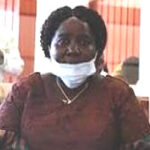 |
 |
 |
| Superintendent | Senator (senior) | Senator (junior) |
| Sam K. Zinnah | Botoe Kanneh | Amara Mohamed Konneh |
Created in 2003, Gbarpolu County, located in Liberia, is a first-level administrative division with its capital in Bopolu.
Background and Introduction
Spanning 3,741 square miles, Gbarpolu is one of Liberia’s 15 counties situated in the western region of Liberia and bordered by Lofa to the North, Bong to the East, Bomi to the South, and Grand Cape Mount County and Sierra Leone to the West. There are 3 Electoral Districts (ED) 1, 2, and 3; and 5 Administrative Districts (Gbarma, Kongba, Bopolu, Belleh and Bokomu respectively), comprising 11 Chiefdoms and 27 Clans. County leadership is headed by a superintendent, while districts, townships, and boroughs are governed by representatives and senators, commissioners, and governors respectively.
According to the 2022 census by the Liberia Institute of Statistics and Geo-Information Services (LISGIS), the population stands at 95,995 made up of 51,121 males and 44,874 females representing 53.3% and 46.7% respectively and 1.83% of the national population figure of 5,250,187.
The County’s flag consists of a gold background on which a centrally placed diamond is flanked on the right by a tree symbolizes the richness of its resources. Given these resources, Gbarpolu County is well placed to recover strongly from the long national crisis
The Kpelle form the majority ethnic group, with Belleh and Gola making the next two largest groups. Kpelle and Gola are the main dialects spoken in the County.
History
Created from a territory previously known as Lower Lofa County, Gbarpolu is the newest of Liberia’s fifteen political sub-divisions. The County seat of Bopolu City is famous as the home and final resting place of King Sao Boso of the Kingdom of Suehn-Bopolu, who resolved the conflict between the settlers of the Mississippi Colonization Society and the natives, paving the way for their co-existence in the coastal areas. Bopolu also served as a stop along the route for the trans-Sahara trade. In spite of an illustrious history that far predates the arrival of the settlers from America, over the decades Bopolu and its environs slowly became an isolated and impoverished place.
The County was formed through the excision of two Statutory Districts, Bopolu and Gbarma, with five administrative districts – Gbarma and Kongba, and Bopolu, Belleh and Bokomu respectively – from Lofa County, amalgamating them into six administrative districts – Bopolu, Gbarma, Kongba, Belleh, Bokomu and Gou-Nwolala (the latter was excised from Bokomu District). The district seats are Bopolu City, which also serves as the County capital, Gbarma Town, Zuie Town, Belleh Baloma, Gumgbeta and Palakwelleh respectively.
Most social services and infrastructure in Liberia have always been concentrated in Monrovia and a few coastal areas. The remainder of the country, including Gbarpolu County, has been largely neglected. The disparity in living standards between urban dwellers and those in the hinterland was a major cause of the civil conflict that took nearly a quarter of a million lives and left many homes and infrastructure destroyed. Gbarpolu County was one of the worst affected by the war.
In support of the decentralization initiatives by the Government of H.E. President Ellen Johnson Sirleaf, the United Nations Mission in Liberia (UNMIL) established County Support Teams (CST) in each county to ensure a participatory and consolidated approach to addressing County challenges, supporting government through the Superintendent’s Office, and building the capacity of government institutions so that they can take over responsibility for security, reconstruction and development. Gbarpolu County Development Agenda.
Climate
Like most of Liberia, Gbarpolu enjoys a tropical climate with a long rainy season between March and October. The average temperature is 28 degrees Celsius and the prevailing wind is from the Southwest.
Topography
Gbarpolu County has two main mountain ranges, Kpo and Fanyea, and three main river systems, the Lofa and St. Paul that form the boundary with Lofa, Bong and Bomi counties, and the Mahe River. It has many large creeks and streams that are tributaries of these main rivers, and two large waterfalls: Goma and Zalakai.
Geology
There are various mineral resources in Gbarpolu County; gold and diamonds are the most commonly exploited. Gold deposits are found in Henry’s Town, Weasua, and Belekpalamu, while diamond deposits are found in Tarkpoima, Sirleaf Town, Smith Camp, and other sites. Iron ore has been discovered, and unconfirmed reports point to the existence of potentially valuable lead, manganese, silver, fluorite, graphite and copper deposits.
Vegetation
Gbarpolu contains significant portions of the Upper Guinea Forest. Most of this forest is deciduous and mountain in nature, covering all three main forest classes: class 3.1– forest with small agricultural; class 3.2–open dense forest; and class 3.3–closed dense forest.
Gbarpolu District 1
Gbarpolu Electoral District 1 has a registered voter population of 16,869 made up of 9,554 males and 7,315 females as of July 2023.
Gbarpolu District 2
Gbarpolu Electoral District 2 has a registered voter population of 18,988 made up of 10,309 males and 8,679females as of July 2023.
Gbarpolu District 3
Gbarpolu Electoral District 3 has a registered voter population of 14,758 made up of 8,486 males and 6,272 females as of July 2023.
Gbarpolu Districts (Administrative)
Gbarpolu County has 5 Administrative Districts (Gbarma, Kongba, Bopolu, Belleh and Bokomu), with a population of 95,995.

